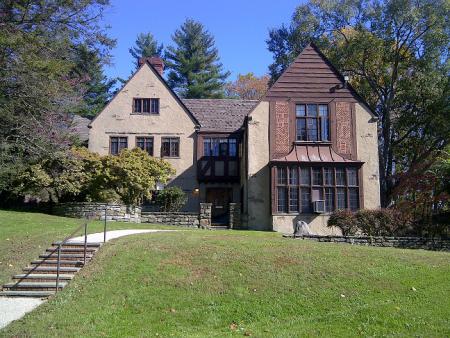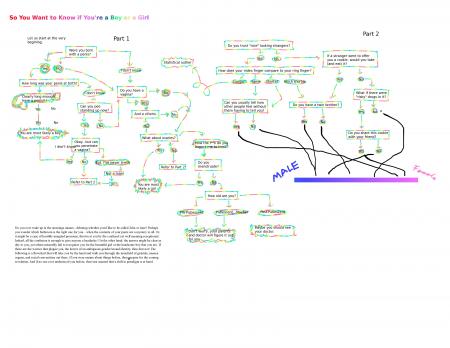Serendip is an independent site partnering with faculty at multiple colleges and universities around the world. Happy exploring!
Blogs

Medical vs. Social? Or, what happened to disability studies?
I had many afterthoughts, following our rich conversation last night about the contexts of choice and the privilege of choosing; thanks to all for participating!
One thought was, what happened to diability studies? The "easy" (?) distinction I heard made between abortions for "medical" and for "social" reasons seemed to me to elide the ways in which disability activists have challenged the separability of those categories. To learn a little more about how this conversation is playing out @ the other end of life, see the website for the disability rights organization Not Dead Yet, which leads w/ this statement: "though often described as compassionate, legalized medical killing is really about a deadly double standard for people with severe disabilities."

Choice
As we transitioned into snacktime, Anne summed up Part II of our class session by posing the question:
Does something trump choice?
I was reminded of this video, which may contextualize, problematize, and/or stigmatize (y)our understanding of the choice(s) you/we have as individuals and as part of a larger American culture/society... is it just me or am I making this statement highly inclusive?
Anyway, what do y'all think about this?

Is Halloween classed?
In light of recent Halloween festivities, I was asked to write a memo for my Urban Soc class about the sociological aspects of Halloween. One of the factors I chose to focus on reminded me of ESem, so I chose to post a bit here. Let me know what you think!
|
||

Week 3 of our dialogue-->now called DiaBlog!
Thanks to all for all our rich discussion, so far (see, below, our discussions from week 1 and week 2, about the surprises of our first visit together, and the need to be "certified" in life). Let's try, this week, writing even more directly about our own experiences. What is something in your life right now that you are passionate about learning or doing -- in or out of school? (If you'd like, find something on Google Image that represents your area of passion, and include the URL to that picture in your post.) In this way we can get to know each other better and also begin to think about how our passions connect with our educations. Enjoy!
The Creative Economy (11/5 @ 4pm)
Thought you all would be interested in this panel discussion at Penn this Saturday
THE CREATIVE ECONOMY – how idea-makers and “big picture” thinkers collaborate to solve new problems – is a frequently discussed economic touchstone in this new century. Next Saturday, November 5, at 4:00 PM, we’re hosting a very special panel discussion to get at the question, what is creativity and why does it matter? Penn professor PETER DECHERNEY will lead four other “creatives” – with careers in everything from local city government to MTV – in talking about how their respective experiences and interests led them to become innovators in their fields. Please RSVP wh@writing.upenn.edu to let us know if you plan to attend!
________________________________________________________________________
The Kelly Writers House and Creative Ventures present
THE CREATIVE ECONOMY
featuring
PETER DECHERNEY
GARY STEUER
CHERYL J. FAMILY
VERONICA JURKIEWICZ
and ALEX MULCAHY
Saturday, November 5, at 4:00 PM in the Arts Café Kelly Writers House | 3805 Locust Walk Please rsvp to wh@writing.upenn.edu or call (215) 746-POEM
Perry House - Inclusion and Exclusion
For my essay, I chose to focus on the space and history of Perry House, which currently serves as the Black Cultural Center; student residence; and meetingplace for Sisterhood, Mujeres, and the Bryn Mawr African and Caribbean Student Organization (BACaSO).
In my paper I analysed it place for both inclusion and exclusion. While Perry House has always been a sort of safe haven for Black, African-American, and now Latina students, it also seems often to deter those who do not fit into these categories despite being a public space. Residence is open to all students, regardless of race, but the predeterminant that you must be an active member of the cultural groups that meet at the space ensures that mostly women of those races live there. In addition to this, its detachment from the campus ensures that residents of the house are likewise relatively isolated from the rest of the campus.


"grandeur in this view of life...."
Also Bruce Wightman, "A Better Rational for Science Literacy" (same issue as below):
all students ... should become scientifically literate. And if they become better, more employable citizens in a more competitively viable America, all the better. But first and foremost, they should become scientifically literate because, to borrow Darwin's phrase, "there is grandeur in this view of life" .... the sciences force us to confront the smallness and irrelevance of human beings; they serve as an antidote to self-obsession. Physics teaches us that time and matter are not absolutes; biology, that astonishing complexity can arise from a long, natural, stepwise process. The scope and existential implications of these ideas are immense.

"Gauging Gender"
In light of our recent conversations about "brain organization," I highly recommend a piece by Stephen Asma, "Gauging Gender," just published in today's Chronicle Review, which reports
* that humanities scholars are "slowly getting over biophobia"
* that biology has become dialectical: While humanists weren't looking, biology (genetics, embryology, evolution, neuroscience, etc.) left behind many of its deterministic pretensions and embraced the indeterministic developmental logic of epigenetics—the complex interface of nurture and nature. Biology now recognizes the immense domain of external triggers and influences (from intrauterine environment to social structures) that shape phenotypic expression of genetic possibilities.
* and recommends that we all read Evelyn Fox Keller's 2010 book, The Mirage of a Space Between Nature and Nurture, "which emphasizes the plastic relationship between genes and environment, and tries to counteract our tendency to privilege one cause over another by emphasizing 'developmental pathways' .... Which traits are malleable, and to what degree? The answers will come from a prudent marriage of biocultural analysis, because developmental pathways don't recognize academic divisions."



